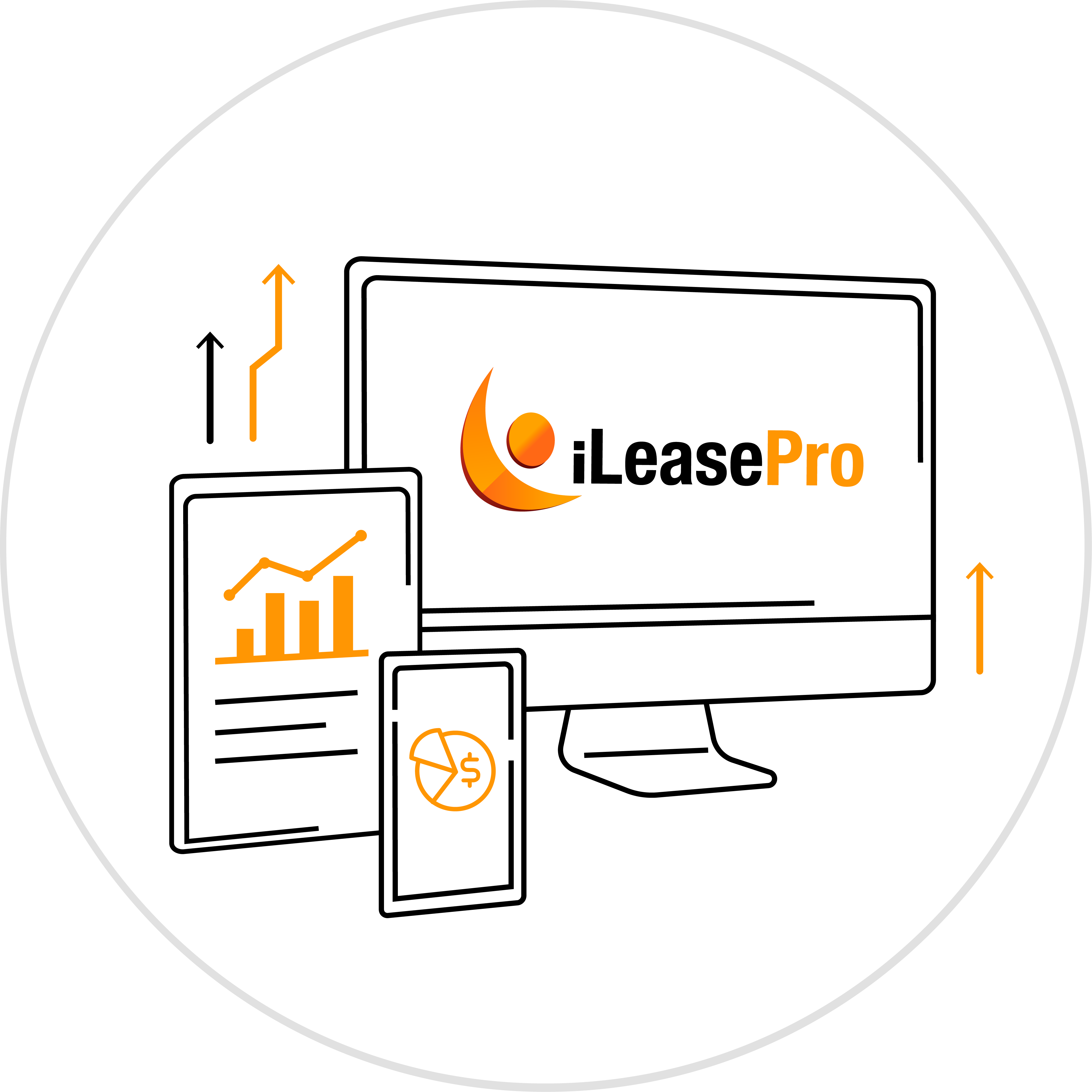-

Regardless of the sector or domain, certain universal financial metrics shed light on the intricacies of a lease agreement. Grasping these metrics is instrumental in guaranteeing that your enterprise not only identifies the optimal asset or space but also clinches it with the most advantageous terms. In this comprehensive guide, we’ll navigate through these pivotal financial indicators, elucidating their importance and demonstrating how they can influence and optimize your leasing choices. Here’s a comprehensive breakdown of each key financial metric in lease analysis, supplemented with its definition, significance, and a brief example for clarity:
Here’s a comprehensive breakdown of each key financial metric in lease analysis, supplemented with its definition, significance, and a brief example for clarity:
- Base Rent: Definition: The fundamental, recurring cost of leasing the asset or space.
- Total Cost of Lease: Definition: The accumulated financial obligations over the lease’s duration, encompassing all associated fees.
- Lease Term: Definition: The agreed duration for which the lease will remain in effect.
- Rent Escalations or Adjustments: Definition: Provisions within the lease that dictate periodic rent increases.
- Security Deposit: Definition: An upfront payment held as collateral to cover potential future liabilities or breaches.
- Net Present Value (NPV or XNPV): Definition: The present value of an investment’s expected future cash flows minus the initial cost.
- Internal Rate of Return (IRR): Definition: The discount rate that makes an investment’s NPV zero, representing its expected return.
- Maintenance, Repair, and Upkeep Costs: Definition: Costs associated with maintaining the leased asset in good working condition.
- Buyout, Termination, and Renewal Clauses: Definition: Stipulations in the lease dictating conditions and costs for ending, renewing, or purchasing the leased asset.
- Tax Implications: Definition: The tax benefits or liabilities arising from different lease structures.
- Residual Value: Definition: The anticipated value of the leased asset at the end of the lease term.
- Break-Even Analysis: Definition: Assessment of the point where total costs equal total revenues, indicating where profitability begins.
Significance: It’s the primary, predictable expenditure that forms the core of lease budgeting.
Example: A company rents office space at $5,000 per month.
Significance: Provides a comprehensive understanding of the lease’s overall financial commitment.
Example: Over a 5-year term, including maintenance and utilities, the total cost might escalate to $340,000 instead of the anticipated $300,000 from base rent alone.
Significance: Influences business flexibility, long-term commitments, and exit strategy.
Example: A startup might opt for a shorter 2-year lease term for flexibility, whereas a stable enterprise might commit to 10 years.
Significance: Affects future budgeting and ensures businesses are prepared for rising costs.
Example: An office lease might stipulate a 4% annual escalation, raising the second year’s rent to $5,200 per month.
Significance: Impacts initial cash outflows and may affect liquidity.
Example: For a premium property, the security deposit might be equivalent to a year’s rent.
Significance: Assesses the lease’s financial desirability by factoring in the time value of money.
Example: Comparing the NPVs of two potential leases can reveal which is more financially favorable in the long run.
Significance: Aids in comparing the potential profitability of various lease options or investments.
Example: A lease with a 7% IRR might be chosen over another option yielding only 4%.
Significance: Can substantially affect the lease’s effective cost and overall profitability.
Example: Leasing manufacturing equipment at a lower base rent might seem attractive, but high maintenance costs borne by the lessee could offset the savings.
Significance: Offers clarity on future flexibility, costs, and strategic options.
Example: A lease with a favorable buyout clause might allow a company to purchase equipment below market value at the term’s end.
Significance: Directly affects net profitability and can influence lease structure choices.
Example: An operating lease might allow deductions on the full lease payments, offering tax savings over capital leases.
Significance: Important for leases with purchase options or for anticipating end-of-term costs.
Example: At a lease’s conclusion, a car’s residual value might be $10,000, allowing the lessee to buy it for that amount.
Significance: Helps in financial forecasting and setting operational targets.
Example: A retailer might need monthly sales of $60,000 to cover lease, inventory, and operational costs.
When evaluating a lease, it’s essential to consider all these metrics in tandem, not in isolation. Each provides a piece of the puzzle, and together they offer a comprehensive view of the financial implications of a lease agreement. Context is also crucial: what’s favorable for one business might not be for another, depending on factors like industry norms, growth stage, and financial health. Always approach lease evaluation holistically, using these metrics as tools to inform, not dictate, your decision.
By defining, understanding the significance, and contextualizing each financial metric with examples, businesses can derive a comprehensive perspective on lease analysis. This approach ensures an informed and strategic decision-making process tailored to a company’s financial health and objectives.
-

Navigating ASC 842 in Lease Analysis
An essential aspect that stakeholders in leasing — whether it’s commercial real estate, equipment, fleet vehicles, or oil & gas — must consider is the ASC 842 lease accounting standard. Implemented by the Financial Accounting Standards Board (FASB), ASC 842 necessitates organizations to recognize leases on their balance sheets, bringing transparency to previously off-balance sheet leasing activities. This standard has a profound impact on financial reporting and requires lessees to recognize assets and liabilities for most leases. As you embark on your leasing journey, ensuring compliance with ASC 842 not only safeguards against potential financial discrepancies but also fortifies your organization’s credibility in financial disclosures. Partnering with iLeasePro can streamline this process, ensuring that your lease analysis is both strategic and compliant.
At iLeasePro, we’ve been helping companies understand and implement ASC 842 since it replaced ASC 840 in December of 2021. We know standard inside out, and we know that iLeasePro will help you be in compliance and pass your audit.
We’ve done this for both small and large businesses, and we’ve also helped these companies use ASC 842 as a business tool to operate more efficiently, get better reporting and use their leases as assets. When you call us we can set you up with a lease accounting software free demo so you can see how it all works.
To do this, call us at 888-351-4606, or you can email us at info@ileasepro.com We also have plenty of great information about lease accounting software on our website, which is ileasepro.com, and you can chat with a live representative there as well.
Let iLeasePro Simplify Your Lease Accounting
Schedule a DemoRelated: iLeasePro Free Trial, iLeaseXpress, iLeaseXpress Unlimited, ASC 842 Financial Reporting, ASC 842 Balance Sheet Reporting, ASC 842 Income Statement Reporting, ASC 842 Cash Flow Reporting, ASC 842 Statement of Shareholder Equity, ASC 842 Disclosure Notes, ASC 842 Management Discussion, ASC 842 Comprehensive Income, ASC 842 Glossary of Terms, ASC 842 Journal Entries, ASC 842 Software, When Is the ASC 842 Compliance Date, FASB Lease Accounting Software, Understanding the New FASB ASC 842 Lease Accounting Standard, How Does a Lease Balance Sheet Change After the New Standard?, Tracking Lease Details After ASC 842, Deferred Rent Explained Under the ASC 842, Guide to Lease Classification, Overview of Relevant Borrowing Rate, ASC 842 Footnote Disclosure, Lease Accounting, What Does Lease Accounting Software Do?, Key Features of A Lease Accounting Software, How to Never Miss Important Lease Dates, Scaling Your Lease Accounting Software to Your Business Needs, How to Select the Right Lease Solution, How to Set Up Lease Accounting Software, What is the Best Lease Accounting Software?, Overview of the Types of Leases, Equipment Lease Software, How the Right Lease Management Software Makes Equipment Leases Easier, Lease Tracking Software, How The Right Software Can Help You Manage Lease Data, Five Benefits of a SaaS Lease Management Solution, A Centralized Lease Portfolio Making Asset Management Easier, Lease Analysis 101, Lease Abstraction, The Importance of Lease Abstraction for Lessees, The Lease Data an Abstract Should Include, What Software Do I Need for Lease Abstracting?, Navigating The ASC 842 Accounting Audit, Ultimate Lease Accounting Audit Checklist, Essential Guide To Engaging Auditors, Leveraging AI for Enhanced Year-End Audits Transitioning to the ASC 842 Standard Lease Document Management ASC 842 Short-Term Leases Practical Expedients Lease Modifications & Remeasurements Lease Variable Payments Embedded Leases Monitoring Critical Lease Dates Transportation - Navigate the ASC 842 The Impact of the ASC 842 on Regulatory Policies in Lease Management & Lease Accounting Integrating Lease Accounting into Your Month-End Closing Process The Modified Retrospective Approach in ASC 842 Determining the Incremental Borrowing Rate A CFO’s ASC 842 Lease Accounting Guide for Construction Companies
